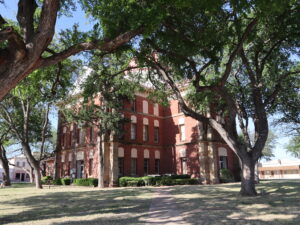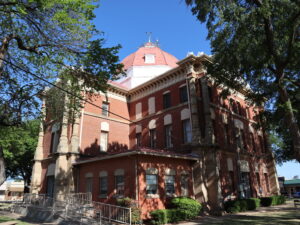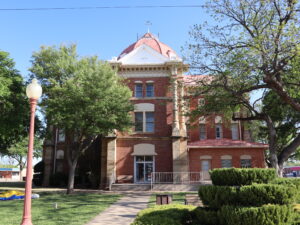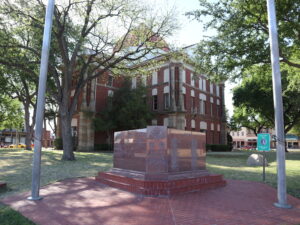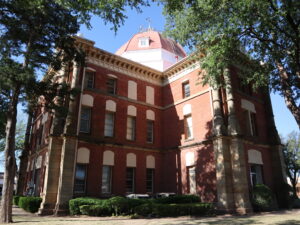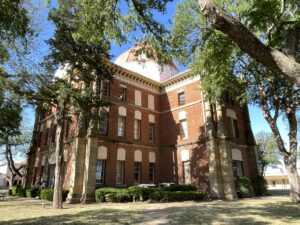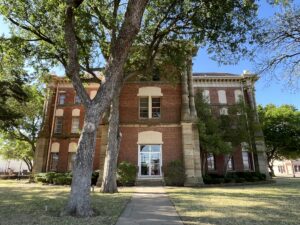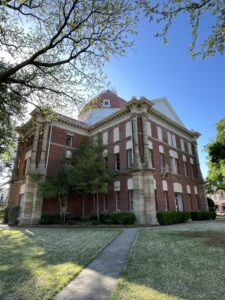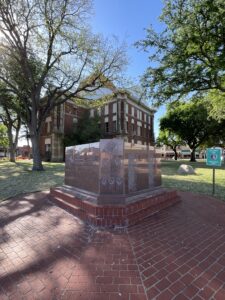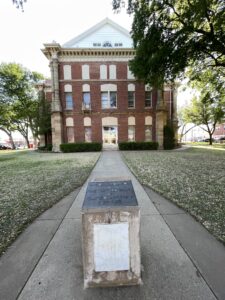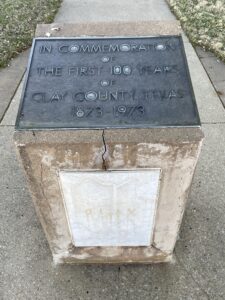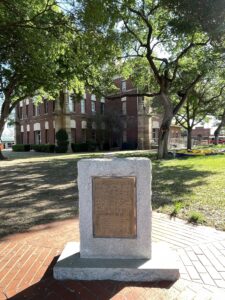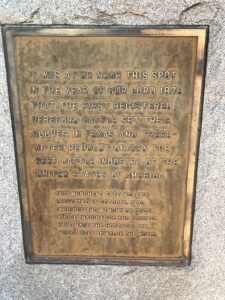Clay County Courthouse (Henrietta)
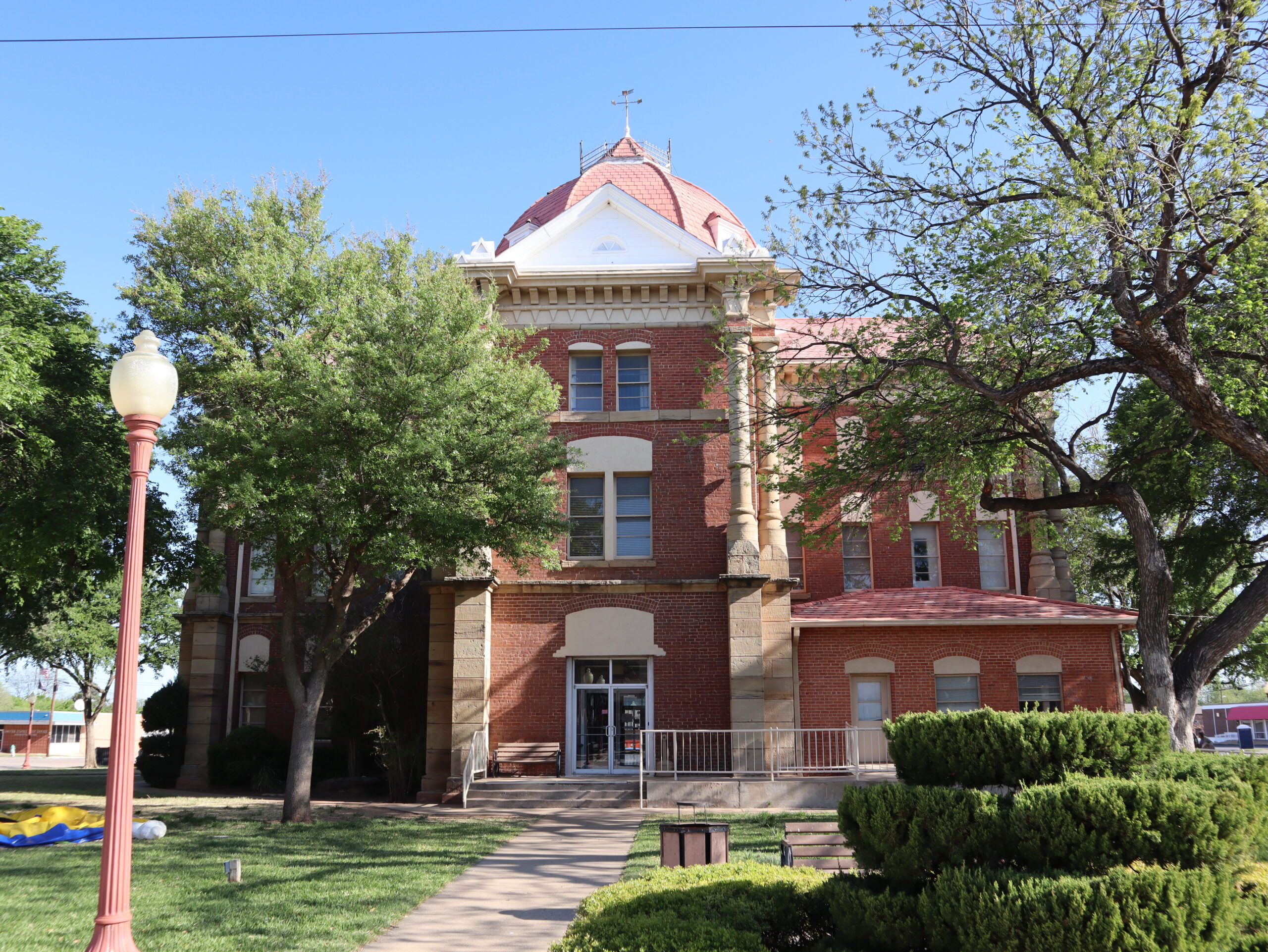
Year Built: 1884
Architect: Wilson & Tozer
The Clay County Courthouse is located in Henrietta, Texas.
From the Application to the National Register of Historic Places:
Clay County was organized in 1857 but Indian raids later forced abandonment. In 1872 the county was reorganized by the Texas Legislature and the following year the county commissioners ordered the construction of the first courthouse, a rectangular stone building.
Named, according to legend, for the wife of Henry Clay of Kentucky, Henrietta was originally laid out in 1860. After abandonment during Indian problems the town was reoccupied in1865 but was once again vacated as a result of pressures from the Indians. It was finally occupied permanently in1873 and i twas incorporated in 1882,the year it became the permanent county seat. Located on the Fort Worth and Denver Railroad and the Missouri, Kansas, and Texas Railroad, it became a commerical center for the surrounding region.
Late in 1883 the commissioners’ court ordered T.J. Craig, County Judge, to advertise for plans and specifications for a new courthouse to be erected on the public square. After examining g those submitted, the plans of W.H. Wilson of Dallas were accepted. Later, another architect, (first name unknown) Tozer, became associated with the project.On January 29, 1884, after consideration of the bids submitted, contractors D.W. Strain, Ward Risley and A. Swinburn of Fort Worth were selected to build the temple of justice for $34,800 and on June 24 the cornerstone was levelled by Henrietta Lodge No. 454, Ancient Free and Accepted Masons.
The plan of the Clay County Courthouse is in the form of a Greek cross with narrow arms projecting to the north and south and wide arms projecting to the east and west, Corridors extending through both arms of the cross provided access from all four sides of the building which was positioned in center of the public square. On the ground level, the wide arms of the cross contained offices and the narrow arms contained the stairways providing access to the courtroom which originally occupied most of the second floor.
The form and details of the courthouse are Classical. The most noteworthy features of the exterior are the sandstone columns on tall pedestals projecting from each of the eight corners, expressing the second floor as a piano nobile. The walls of locally-manufactured red brick are accented by sandstone stringcourses. During construction an iron cornice was substituted for the stone cornice that was originally specified. Originally the roof was hipped on a low pitch, creating a stronger horizontality than thenew gable roof provides. A tall tower with four clock faces surmounted by a cupola and finished with sheet metal details was replaced early in the twentieth century by a low dome of frame construction. Late i n the century, an iron fence and concrete sidewalks were installed–these, of course, have been removed and replaced.
In 1891 a fireproof record room was added and in 1893 twenty four incadescent lights were installed (a nearly use in West Texas of artifical lighting).

